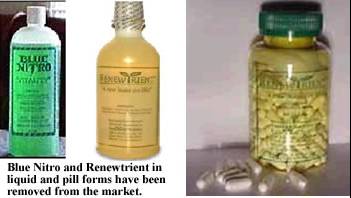Ecstasy is distributed in tablet form. Individual tablets are often imprinted with graphic designs or commercial logos, and typically contain 100 mg of MDMA.

Ecstasy is distributed in tablet form. Individual tablets are often imprinted with graphic designs or commercial logos, and typically contain 100 mg of MDMA. |  |
| Street names | Form of usage |
|---|---|
|
|
The Drug Enforcement Agency reports that "In 2000, more than 6.4 million people age 12 and older reported that they have used Ecstasy at least once in their lives". Ecstasy is popular among middle-class adolescents and young adults. Ecstasy is sold primarily at legitimate nightclubs and bars, at underground nightclubs sometimes called "acid houses," or at all-night parties known as "raves."
Since it's ban in the Unites states in the 1980's, the vast majority of Ecstasy consumed domestically is produced in Europe. A limited number of Ecstasy laboratories operate in the United States. Law enforcement seized 17 clandestine Ecstasy laboratories in the United States in 2001 compared to 7 seized in 2000.
Ecstasy costs little as 25 to 50 cents to manufacture an Ecstasy tablet in Europe, but the street value of that same Ecstasy tablet can be as high as $40, with a tablet typically selling for between $20 and $30.4
SIDE EFFECTS:
In addition to chemical stimulation, the drug reportedly suppresses the need to eat, drink, or sleep.
When taken at raves, where all-night dancing usually occurs, the drug often leads to severe dehydration
and heat stroke in the user since it has the effect of "short-circuiting" the body's temperature signals
to the brain. An Ecstasy overdose is characterized by a rapid heartbeat, high blood pressure, faintness,
muscle cramping, panic attacks, and, in more severe cases, loss of consciousness or seizures. One of the
side effects of the drug is jaw muscle tension and teeth grinding. As a consequence, Ecstasy users will
often suck on pacifiers to help relieve the tension. Ecstasy may cause hyperthermia, muscle breakdown,
seizures, stroke, kidney and cardiovascular system failure, possible permanent damage to sections of brain
critical to thought and memory, and death.
ECSTASY USE: THE KNOWN DANGERS
Youth use of the drug 3-4 Methylenedioxymethamphetamine (MDMA)—commonly referred to
as ecstasy—rose precipitously during the latter half of the 1990s, only to decline
dramatically in the past two years. Like other “new” illicit drugs introduced to Americans
over the past 30 years, this increase in ecstasy use was largely driven by a mistaken belief
that the drug was harmless. Numerous studies have demonstrated that far from being harmless,
ecstasy use can result in serious health consequences and can produce dependency. The rise
and subsequent decline in ecstasy use is an excellent example of the powerful effect prevention
efforts have on reducing youth drug use.
SIGNS & SYMPTOMS: Ecstasy is a stimulant with hallucinogenic properties, the psychedelic effects of which can last between 4 and 6 hours. It is usually taken orally in pill form. The psychological effects of ecstasy include confusion, depression, anxiety, sleeplessness, drug craving, and paranoia. Adverse physical effects include muscle tension, involuntary teeth clenching, nausea, blurred vision, feeling faint, tremors, rapid eye movement, and sweating or chills. Because of ecstasy’s ability to increase heart rate and blood pressure, an extra risk is involved with ecstasy ingestion for people with circulatory problems or heart disease. In addition to these potential consequences of ecstasy use, numerous studies have demonstrated other serious health complications:
COMPLICATIONS:
In addition to its impact on the brain, research shows that ecstasy use can lead to disruptions
in body temperature leading to harmful reactions such as dehydration, hyperthermia, and seizures,
as well as dangerously high blood pressure and heart rate. Hyperthermia can result in the body’s
vital organs shutting down, which is particullarly important in the "Club" environment, where
the high amount of physical activity can agrivate the problem.
The effects in users can include cognitive, behavioral, and emotional problems
and potentially more toxic effects. Ecstasy use is associated with increased
depression, cognitive dysfunction, and adversely affected memory and higher
cognitive function. All of these patterns are consistent with ecstasy’s
short-term effects on the brain (Boot et. al. 2000).
GHB (gamma hydroxybutyric acid)
GHB is an odorless, colorless liquid form or White powder material. |  |
| Street Names | Forms of Use |
|---|---|
|
Usually ingested in a liquid mixture most commonly mixed with alcohol. GHB is usually sold by the capful, and sells for $5 to $25 per cap. |
KETAMINE
BZP
LSD
Treatment>
Copyright © 2004
Dana Cox
please e-mail me @- EMS Consultants
Revised - January 2004